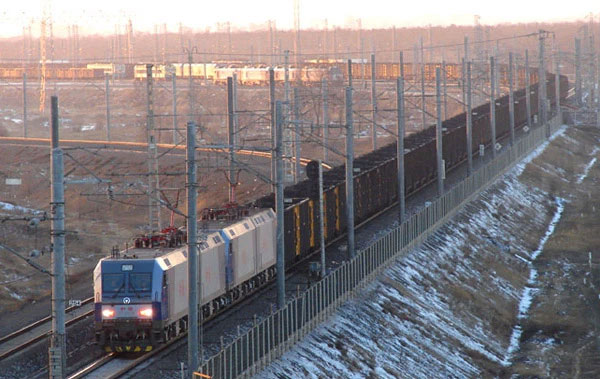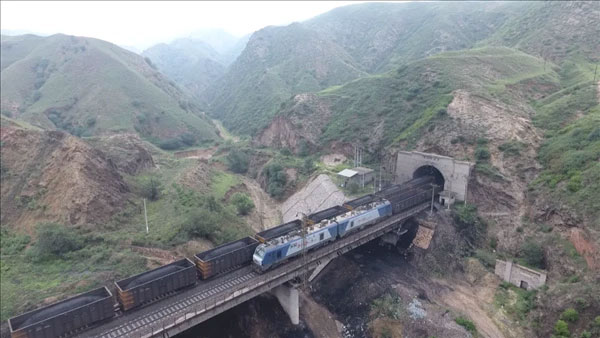The time required to walk from the front to the back of the train is over half an hour.
The Daqin Railway, stretching 653 km, is one of the main routes for transporting coal from the west to the east of China, known as the “first heavy freight corridor” in the country. Its name is derived from the two cities at either end of the line: Datong, a coal mining hub in Shanxi Province, and Qinhuangdao, located in Hebei Province.
The main character on this vital route is a super long and heavy train, with a load capacity of 20,000 tons consisting of 210 C80 cars, pulled by two Harmony-1 electric locomotives. The entire train measures approximately 2,614 meters in length, and walking its full length will take you more than half an hour. That is why it is also nicknamed the “longest train in China.”

This super long and heavy train has a load capacity of 20,000 tons consisting of 210 C80 cars.
In China, train drivers are classified into ranks based on the load capacity they can operate, with the highest group being heavy-duty drivers for trains weighing 10,000 tons, 15,000 tons, and up to 20,000 tons. To operate this longest train, one must qualify to drive a 20,000-ton heavy-duty train. According to official figures, there are currently only over 600 qualified train drivers in all of China.
However, even with a train driver’s license and over a year of operational experience, those who wish to sit in the front car must undergo multiple screening processes to select the best candidates. The probability of selecting a qualified driver is reported to be only 15%.

Currently, there are only over 600 qualified train drivers in all of China to operate this train.
This selection process is extremely rigorous because the Daqin Railway is very complex. With a total length of 653 km, it includes a number of bridges and tunnels that account for 21% of the total length of the line, with curved sections making up 27%. The train must pass through tunnels, over bridges, and navigate many continuous turns, at times with the front of the train going uphill while the back is going downhill.
According to veteran train drivers, with a 20,000-ton train, the frightening aspect is not the inability to move but the fear of not being able to stop. Every speed adjustment and brake application must be very precise, allowing no room for carelessness. This requires the driver to possess extremely high skills and to understand and be aware of the track conditions at each small segment to implement the correct braking measures at the right time and place.
On the Daqin Railway, it takes about 11 hours for a fully loaded coal train to complete one direction. During the operation, whenever encountering signals, the driver must perform hand signals, direct their gaze, and read commands. The number of these actions can exceed 600 times in a single journey.
When facing adverse weather conditions such as rain or snow, the locomotive going up and down hills is very prone to slipping; therefore, preparations and responses must be in place for when to accelerate before climbing hills and when to brake while descending.
During the pre-departure inspection of the locomotive, drivers can assess the working condition of the components simply by listening to the machine’s sounds. When checking the brakes, they can accurately read the air charging time down to the second without looking at the clock. And when braking to stop, the standard deviation for a 20,000-ton train measuring 2.6 km in length is less than 1 meter.



















































